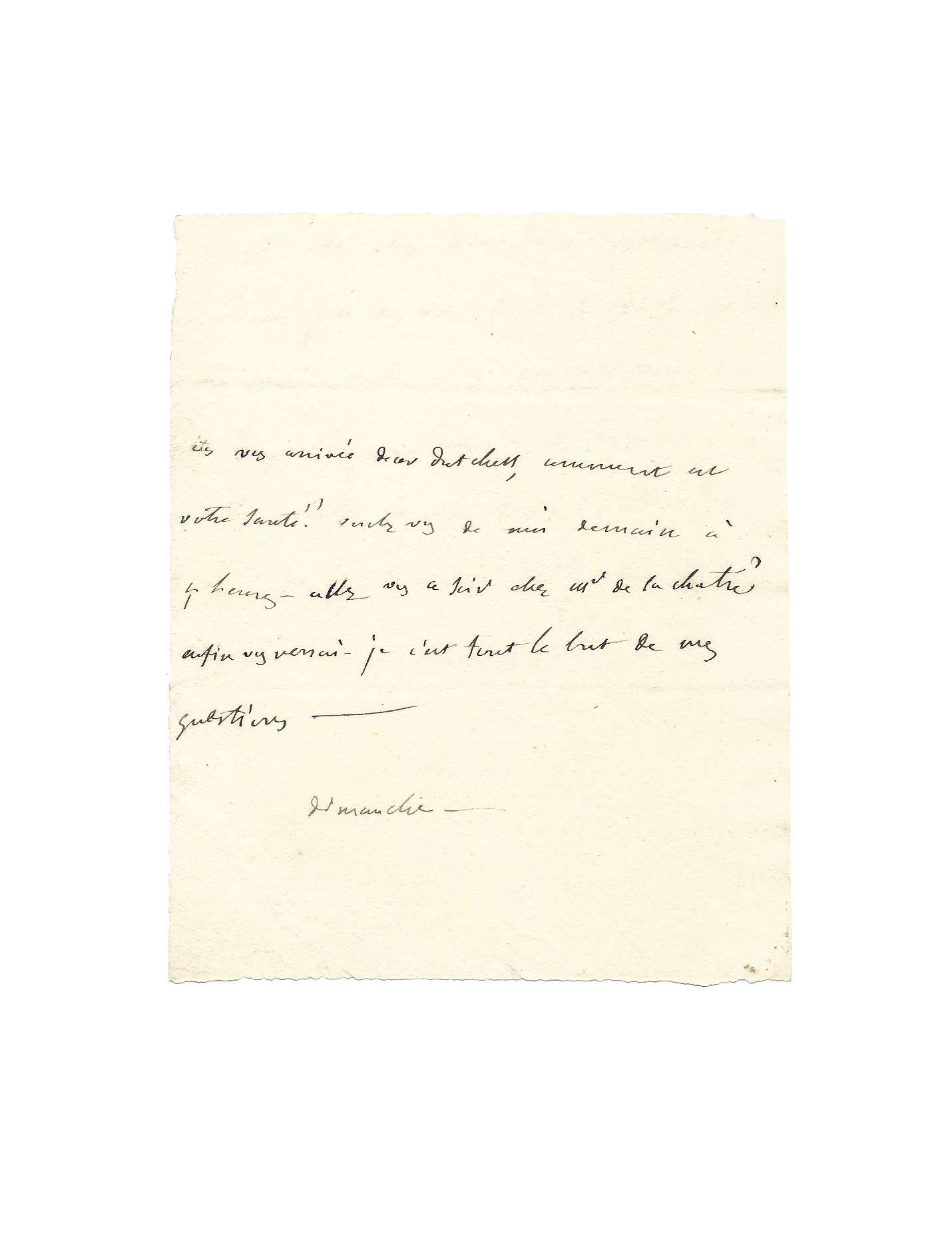STAËL (de), Germaine (1766-1817)
Autograph letter to Claire de Duras
N.p.n.d, “Sunday” [after 1815], 1 p. in-12°
« Will you go this evening to visit Mde de la Châtre ? »
Fact sheet
STAËL (de), Germaine (1766-1817)
Autograph letter to Claire de Duras
N.p.n.d, “Sunday” [after 1815], 1 p. in-12°
Warm little note to her “Dear duchess”, Claire de Duras
« êtes-vous arrivée dear duchess, comment est votre santé ? voulez-vous me voir à 4 heures – allez-vous ce soir chez M[a]d[am]e de La Châtre ? enfin vous verrai-je c’est tout le but de mes questions –
Dimanche – »
Novelist, essayist, actress and philosopher of politics, Germaine de Staël was the most illustrious woman of her time — from the tormented years of the Revolution, the Napoleonic regime and the Restoration to its beginnings.
She left unfinished her Considérations sur les principaux événements de la Révolution française, published posthumously in 1818.
Claire de Duras (1777-1828) remained famous for her novel Ourika (1823), which analyzes issues of racial and sexual equality. She is considered today as a precursor of feminism. Her friendships with Chateaubriand and Germaine de Staël opened Parisian literary circles to her.
The two women maintained an affectionate correspondence during the last years of Germaine de Staël’s life. The latter, in a declining state of health, endeavoured to see her “Dear duchess” as regularly as possible, as she liked to call him. It should be noted that Madame de Staël enjoyed using anglicisms in her correspondence with the people she cherished.
Marie Charlotte Louise Perrette Aglaé Bontemps (1762-1848), known as the Countess of La Châtre – of whom Vigée Le Brun made a sumptuous portrait at the beginning of the French Revolution – was the daughter of Louis Dominique Bontemps (1735-1866), first valet of King Louis XV and governor of the Tuileries Palace.
